Topics 2022
November 2022
Nov. 28, 2022 Updated
GEOTAIL ends after over 30 years of observational operations
|
GEOTAIL is a joint Japan-US project to observe the Earth's magnetotail. The satellite was launched in July 1992 from Florida in the USA onboard the Delta-II launch vehicle. On a long elliptical orbit around the Earth, GEOTAIL conducted long-term observations for more than 30 years, and achieved ground-breaking results, in particular numerous discoveries in the Earth's magnetotail, such as demonstrating that magnetic reconnection occurs at the daytime boundary and tail of the Earth's magnetosphere, clarifying how ions and electrons behave in this region. GEOTAIL's operation for more than 30 years far exceeded the originally planned three-and-a-half-year mission period. However, by the end of June 2022, both the satellite's installed data recorders stopped operating. Due to lack of sufficient observation data, it was decided to terminate observation operations on November 28, 2022, and stop the operation of the spacecraft and radiowave transmission. The results of the mission will be summarised by the end of March next year. We would like to express our deepest gratitude to all the organisations and individuals who have cooperating in the operation of GEOTAIL so far. |
October 2022
Oct. 24, 2022 Updated
Australia-Japan leaders support in principle the landing of the MMX (Martian Moons eXploration) capsule in Australia.
|
The leaders confirmed in-principle support for Australia to be the landing site for the Japanese Martian Moons eXploration (MMX) capsule, expected to launch in 2024. Leaders welcomed this strong collaboration between Australia and Japan in space science research activities  |
August 2022
Aug. 23, 2022 Updated
NASA-ESA-JAXA Joint Declaration on trilateral collaboration is issued.
|
The National Aeronautics and Space Administration (NASA), the European Space Agency (ESA) and the Japan Aerospace Exploration Agency (JAXA) initiated a collaborative effort aiming at establishment of the COVID-19 Earth Observing Dashboard in May 2020, and extended its scope to global environmental change later in March 2021. In May of this year, three years after the start of its initiative, Earth Observing Dashboard has reached the stage of total renewal. Noting the increasing use of the joint Dashboard and the continuous users’ requests for more information, NASA, ESA, and JAXA agreed to continue through June 2024 to advance their joint work in global understanding of the changing environment with human activities.
For the text of NASA-ESA-JAXA Joint Declaration:
Related Information:
|
July 2022
Jul. 7, 2022 Updated
The 10th Space Debris Workshop
|
In view of the recent deterioration of the on-orbit environment due to advances made in space development and a
large number of future launch plans, space debris countermeasures are becoming increasingly important for
sustainable space development and utilization. The 10th Space Debris Workshop will be held as one of the largest
space debris discussion forums for all stakeholders in Japan, providing information on domestic and international
technical trends related to space debris issues, and fostering active cooperation among researchers. The 10th Space Debris Workshop will be held at the JAXA Chofu Aerospace
Center and online. 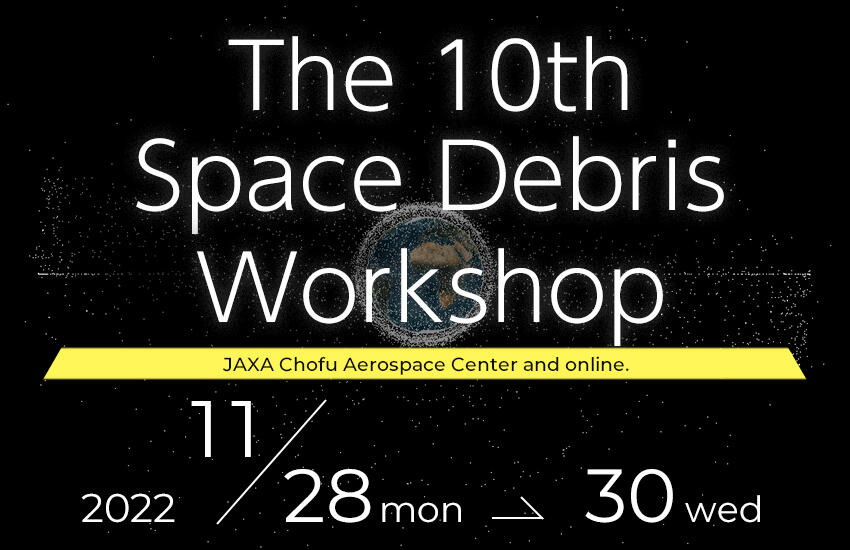
|
Jul. 5, 2022 Updated
JAXA President Yamakawa met CNES President Baptiste
|
On June 28, Dr. Yamakawa Hiroshi, President of JAXA had a bilateral meeting with Dr. Philippe Baptiste, Chairman and CEO of CNES, French National Centre for Space Studies at the occasion of CNES’visit to Japan. In the meeting, Dr. Yamakawa celebrated the 60th anniversary of CNES and discussed current and future cooperation.
During the stay, CNES delegation paid a visit to JAXA Tsukuba Space Center on June 29 and joined the CNES 60th anniversary event held on June 30 at Miraikan, Tokyo. CNES has been one of the most important partners for JAXA having a long and diverse history of collaboration, and the ties were further strengthened with this visit.  CNES delegation’s visit to Tsukuba Space Center on June 29 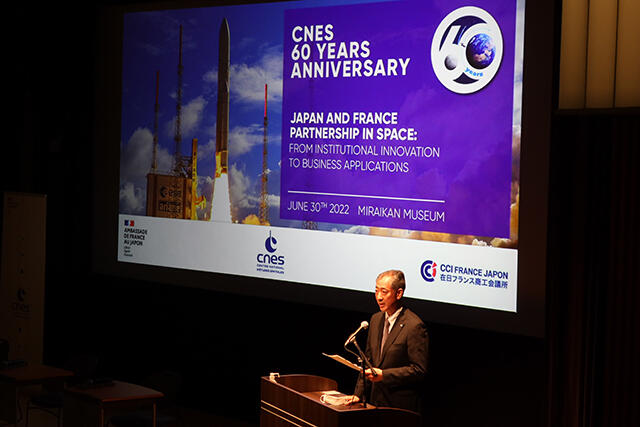 JAXA President Yamakawa giving a keynote speech in CNES 60th anniversary event on June 30.  Group photo at CNES 60th anniversary event (JAXA President Yamakawa in the left) |
June 2022
Jun. 6, 2022 Updated
Establishment of “JAXA Sustainable Space Principles”
|
In order to demonstrate its commitment to the long-term sustainability of outer space activities, JAXA established "JAXA Sustainable Space Principles" as follows. The Principles were presented at the 65th Session of the UN Committee on Peaceful Uses of Outer Space (COPOUS). “JAXA Sustainable Space Principles” ①Together with space related entities from around the world, JAXA commits to the preservation of the outer space as a realm of all mankind. ②JAXA brings the benefits of outer space exploration and utilization equally to the present and future generations. ③By developing innovative technologies, JAXA contributes to the resolution of challenges associated with the promotion of sustainable space activities. These commitments serve as our guiding principle to achieve the “JAXA’s priority areas for sustainable outer space” in JAXA’s basic policy on the SDGs. |
May 2022
May 24, 2022 Updated
Automatic acquisition and tracking technology successfully demonstrated in optical communication experiments between an optical ground station and an optical communication terminal on a small satellite
|
JAXA successfully demonstrated automatic acquisition and tracking technology in optical communication experiments of 1.5㎛ band between the optical ground station (60cm) at JAXA Nyukasa optical observatory in Ina city, Nagano prefecture and the OSIRIS optical communication terminal of the Institute of Ccommunications and Navigation of German Aerospace Center(DLR) on the Flying Laptop satellite of the University of Stuttgart. JAXA has been conducting the research and development of technologies which receives the weak downlink light from a satellite by a small telescope of an optical ground station and automatically acquires and tracks it by the image processing technology for future practical applications for high-speed optical communications between space and ground. Based on our joint research between JAXA and DLR*1, we conducted optical communication experiments between the JAXA optical ground station(60cm) and the optical communication terminal (OSIRIS-V1*2 ) on the small satellite (Flying Laptop), built and operated by the University of Stuttgart. In this experiment, it was confirmed that the weak downlink light was automatically acquired and very accurately tracked by our developed image processing technology and the downlink light was received and consequently the automatic acquisition and tracking technology was realized. In this automatic acquisition and tracking technology, an automatic function of discriminating, acquiring, guiding the light from a high-speed flying object to the center of field of view and continuing to track it sequentially by controlling the azimuth and elevation of the telescope through tracking sensors for wide and narrow angles on the optical ground station, was demonstrated by our developed image processing technology. At the optical ground station, a unique fiber with a larger incident aperture and a mechanism to amplify received light are incorporated to realize a more compact receiver system. Optical communication technology between space and ground is expected to be utilized in high-speed communications for commercial satellites and the moon and planetary missions as communication measures of high-capacity and high-speed communications without constraints of frequency bandwidth and others. |
May 20, 2022 Updated
Renewal of the Earth Observing Dashboard, Joint analysis website of JAXA, NASA, and ESA using Earth observation data
|
Japan Aerospace Exploration Agency (JAXA), in cooperation with National Aeronautics and Space Administration (NASA) and European Space Agency (ESA), has analyzed changes in the global environment and socio-economic activities using Earth observation satellite data in order to understand the impact of the COVID-19 from space. We have made the results of this joint analysis available on the "Earth Observing Dashboard", the joint website of the three agencies, since June 2020. In order to better contribute to our understanding of global and diverse environmental changes, we have expanded the scope of our website into six new independent fields: Atmosphere, Agriculture, Biomass, Water and Ocean, Cryosphere, and Economy in addition to COVID-19, and have relaunched the Earth Observing Dashboard. Through the Earth Observing Dashboard, we hope that Earth observation satellite data will be utilized as objective perspectives and information for a broader understanding of global-scale issues such as environmental change and climate change, as well as the social and economic impacts caused by them. Earth Observing Dashboard 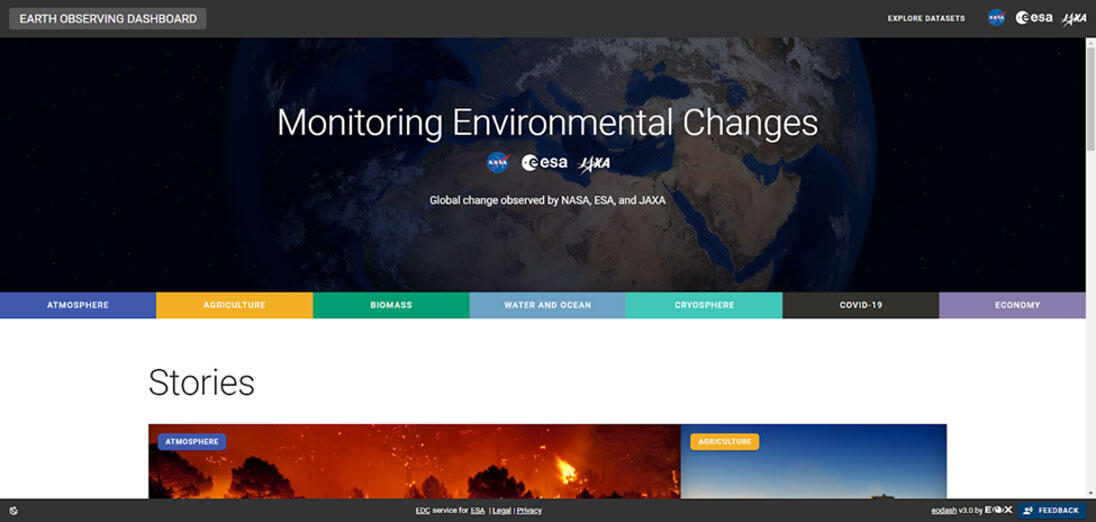
Fig.1:Earth Observation Dashboard Landing Page |
April 2022
Apr. 25, 2022 Updated
Tsukuba Space Center Visit of U.S. Ambassador to Japan
|
On April 21, 2022, H.E. Mr. Rahm Emanuel, Ambassador of the United States of America to Japan, his wife, and his team visited the JAXA Tsukuba Space Center. Dr. YAMAKAWA Hiroshi, President of JAXA, introduced the Ambassador to spacecraft integration and test facility, International Space Station (ISS) Kibo Mission Control Room and the exhibition hall “Space Dome”. He also explained JAXA’s activities conducting with the U.S. National Aeronautics and Space Administration (NASA) such as achievements based on Japan-United States Open Platform Partnership Program, study status towards the Lunar Orbital Platform-Gateway and development of X-Ray Imaging and Spectroscopy Mission (XRISM). H.E. Mr. Rahm Emanuel, Ambassador expressed his expectations to Japan’s space leadership. 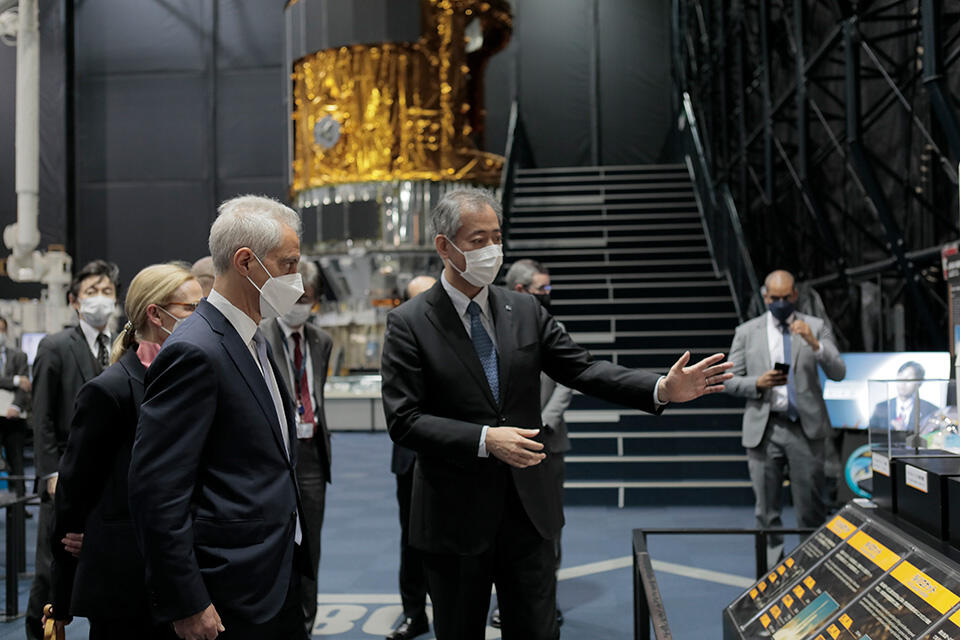
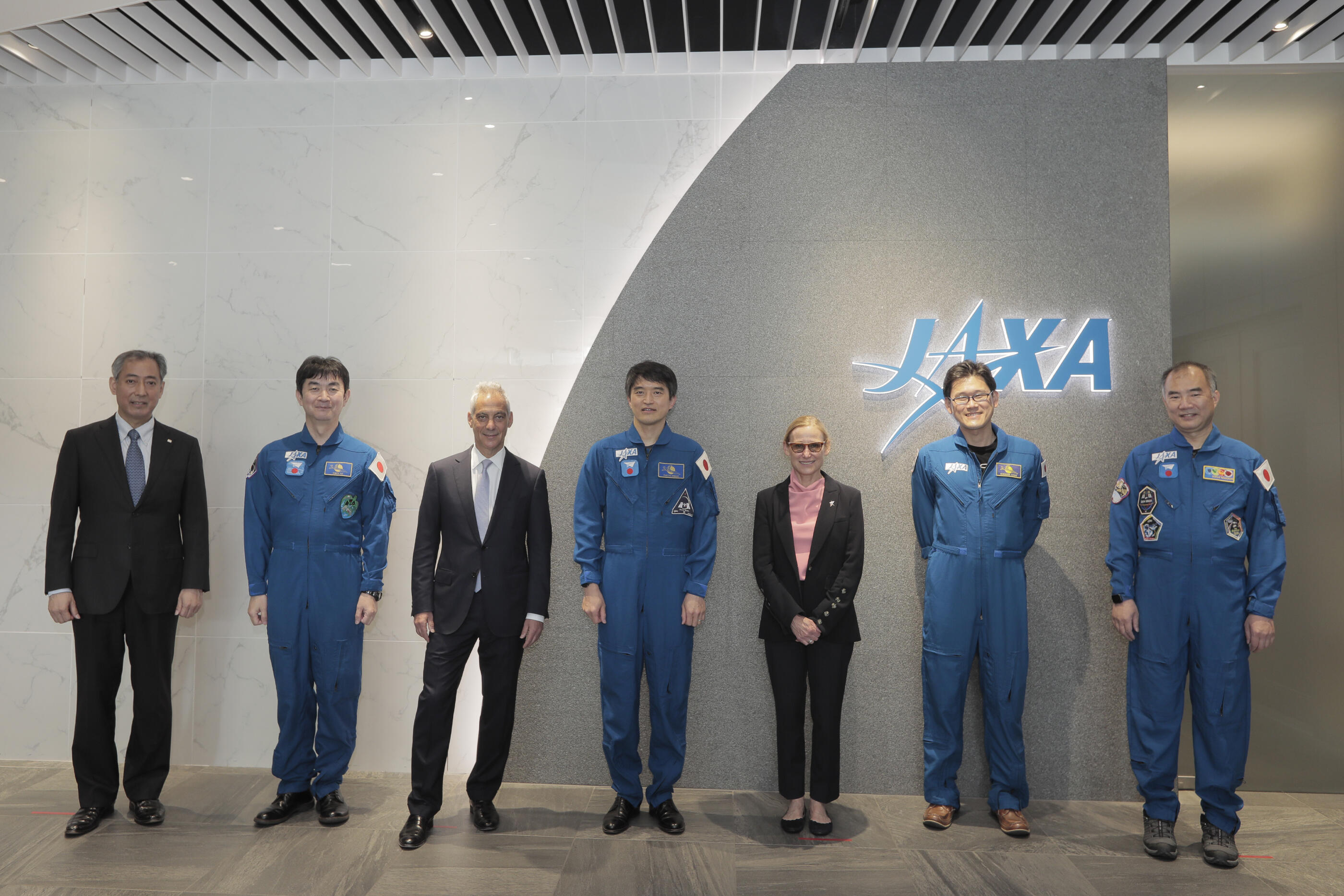
|
Apr. 12, 2022 Updated
JAXA and German Aerospace Center (DLR) Signed Inter-Agency Arrangement
|
JAXA and DLR signed the Inter-Agency Arrangement for Strategic Partnership on April 5 at the occasion of the Space Symposium taking place in Colorado Springs, U.S. This arrangement builds on the collaborative relationship formed in the former framework concluded in 2016 between the two agencies and will pave the way for a further collaboration of JAXA and DLR. This arrangement includes several new cooperation topics such as Space Sustainability, on top of the ongoing broad cooperation in the area of Earth Observation, ISS and Micro-G-Research, Exploration and Space Science, Space Transportation, Research and Development (Space Systems and Space Technology), Industrial promotion, and Aeronautics. Besides that, this arrangement is expected to further streamline the discussion for aeronautics cooperation. JAXA has promoted various collaborations with DLR as a strategic partner and will continue this collaborative relationship based on the new arrangement. JAXA President Yamakawa Hiroshi said: “DLR has been our outstanding strategic partner for JAXA based on the former framework concluded in 2016. The new Inter-Agency Arrangement for Strategic Partnership on which we made signatures today will pave the way for a further collaboration of JAXA and DLR, and also expand the areas of our cooperation to cover Space Sustainability as well as Research and Development for Automation and Robotics as new ones. We are very much pleased to further strengthen our partnership based on this new Arrangement.” “German-Japanese cooperation has been characterised by successful joint space missions, such as Hayabusa2. Extending this cooperation to aeronautics research, with the goal of emission-free air transport, is a clear step,” said Anke Kaysser-Pyzalla, Chair of the DLR Executive Board. Walther Pelzer, DLR Executive Board Member and Head of the German Space Agency at DLR, was present at the signing. He emphasised: "Germany and Japan share the same values and face similar societal challenges. Japan is therefore an ideal partner for contributing to a modern, mobile, and economically and ecologically responsible society through space research." 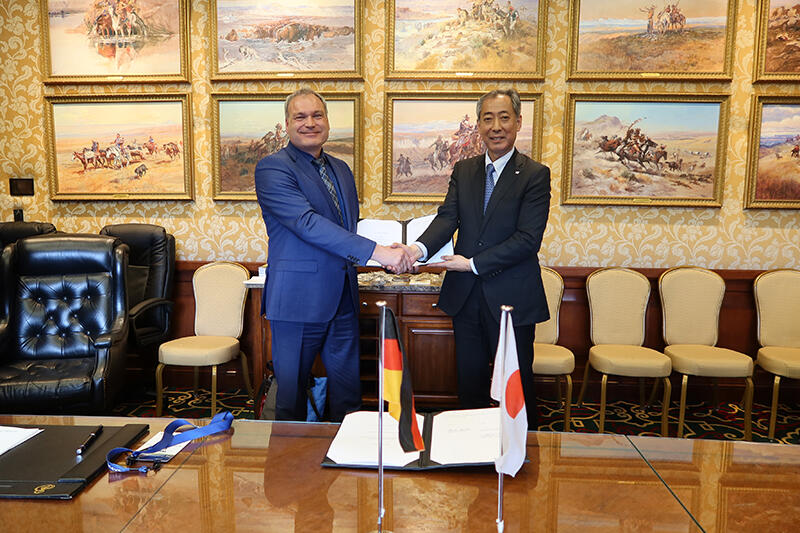
Walther Pelzer, Member of the DLR Executive Board (left) and Yamakawa Hiroshi, JAXA President (right) |
Apr. 8, 2022 Updated
Bilateral Meeting with NASA Administrator, Sen. Nelson
|
Dr. YAMAKAWA Hiroshi, President of Japan Aerospace Exploration Agency (JAXA) had a bilateral meeting with National Aeronautics and Space Administration (NASA) Administrator, Sen. Bill Nelson at NASA Headquarters in Washington D.C. on April 7, 2022. Dr. YAMAKAWA and Sen. Nelson exchanged prospects on JAXA=NASA collaboration and confirmed the importance of international partnerships. 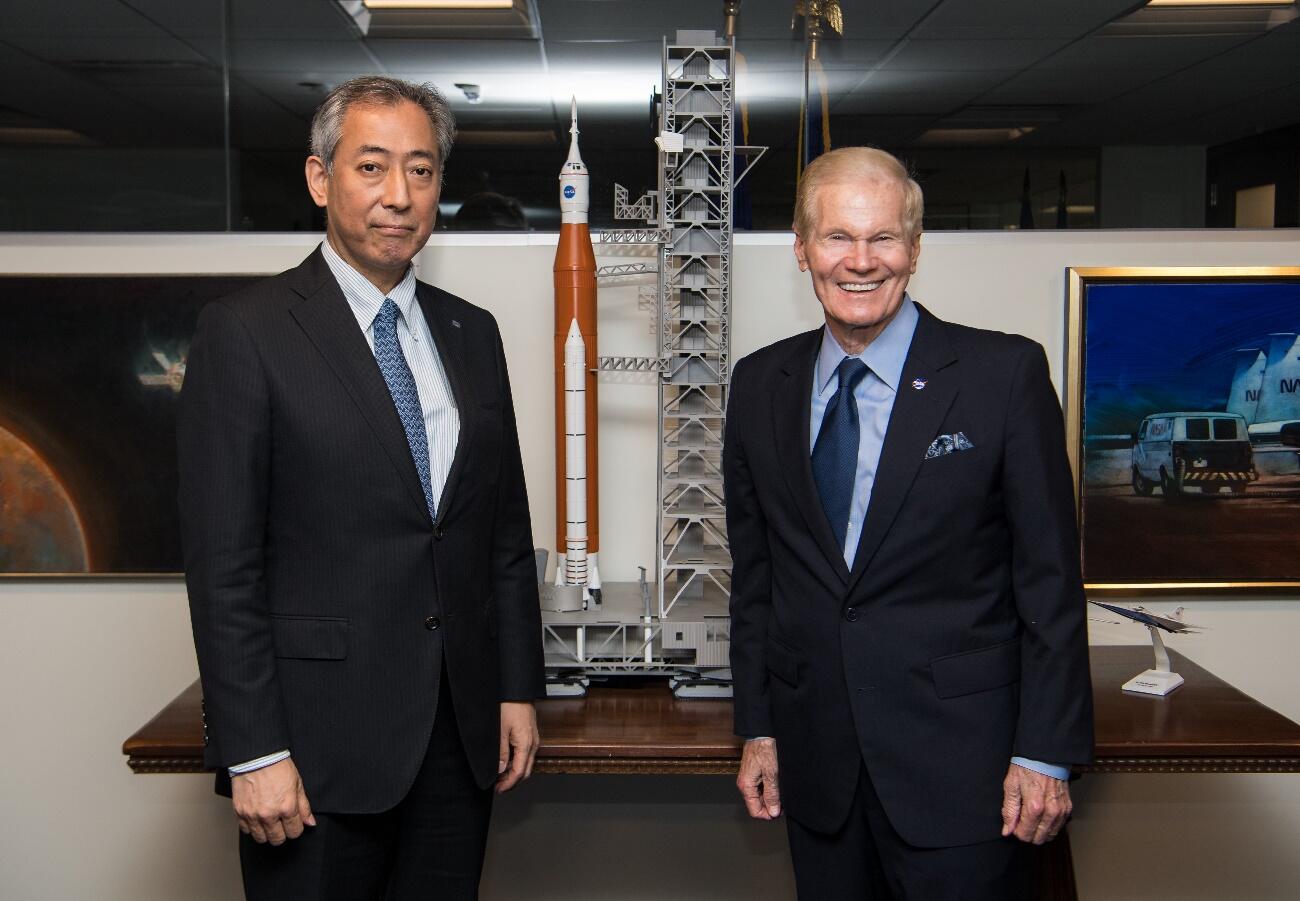
Dr. Yamakawa Hiroshi, JAXA President (left) and Sen. Bill Nelson, NASA Administrator (right) (©NASA) 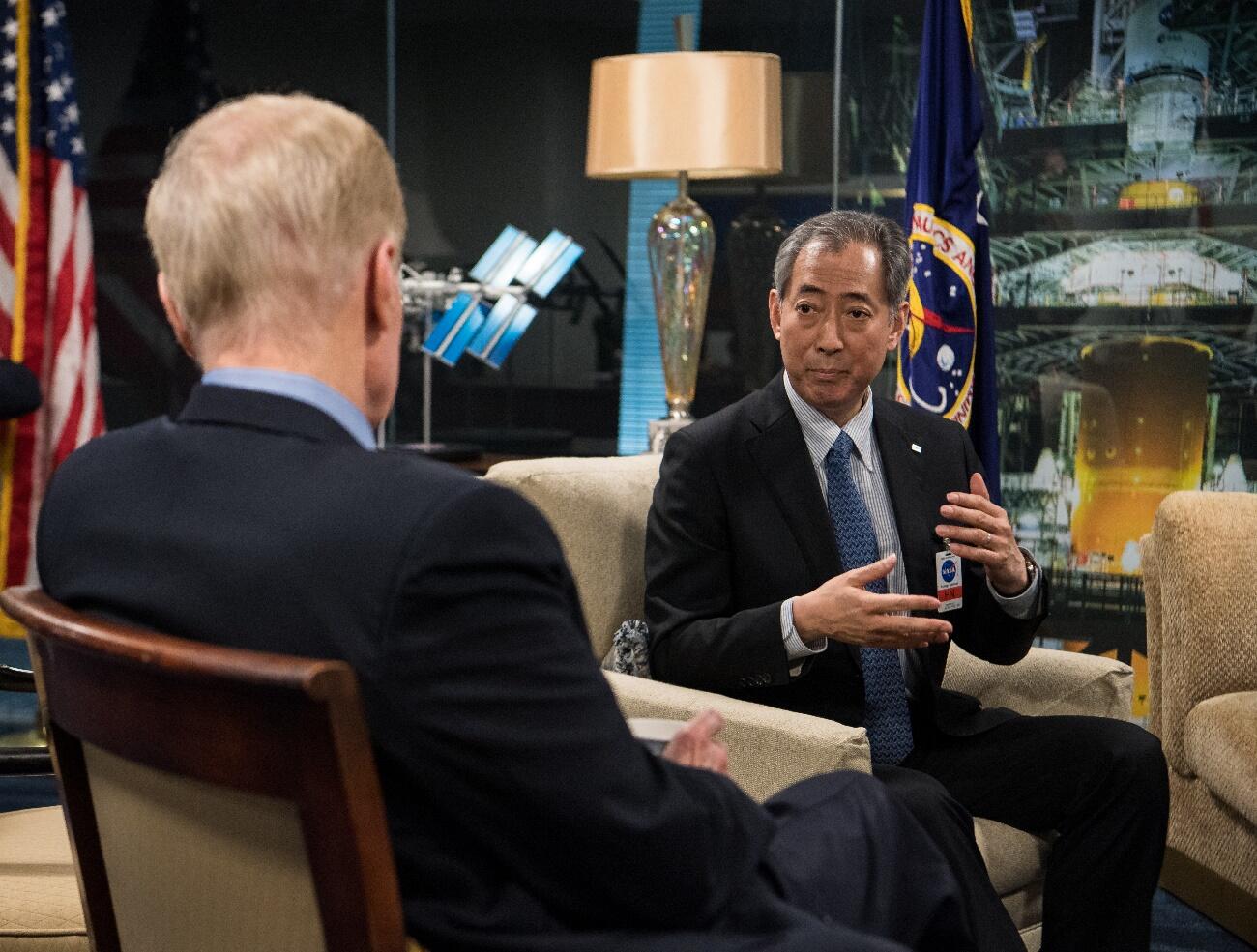
Dr. Yamakawa Hiroshi, JAXA president holding a meeting with Sen. Bill Nelson, NASA Administrator(©NASA) |
Apr. 6, 2022 Updated
[4th Asia-Pacific Water Summit (APWS)] - Official Side Event "Space Technologies for addressing Water Issues"-
|
JAXA will organize an official side event at the 4th Asia-Pacific Water Summit (APWS) to be held in Kumamoto, Japan in April 2022. The Asia-Pacific region is vulnerable to climate change, particularly water-related disasters. In mitigating damage from water-related disasters, the challenge is to improve forecasting capabilities, from short-term weather forecasts to long-term climate change projection, in addition to understanding the situation on the ground through timely observations. In this side event, experts from various countries will be invited to discuss issues related to water-related disasters and challenges in agriculture. |
February 2022
Feb. 28, 2022 Updated
Registration is NOW OPEN for The Ryugu AO
|
Finally, the Ryugu AO system starts proposal registration! To join the program, please create your account by March 25th. 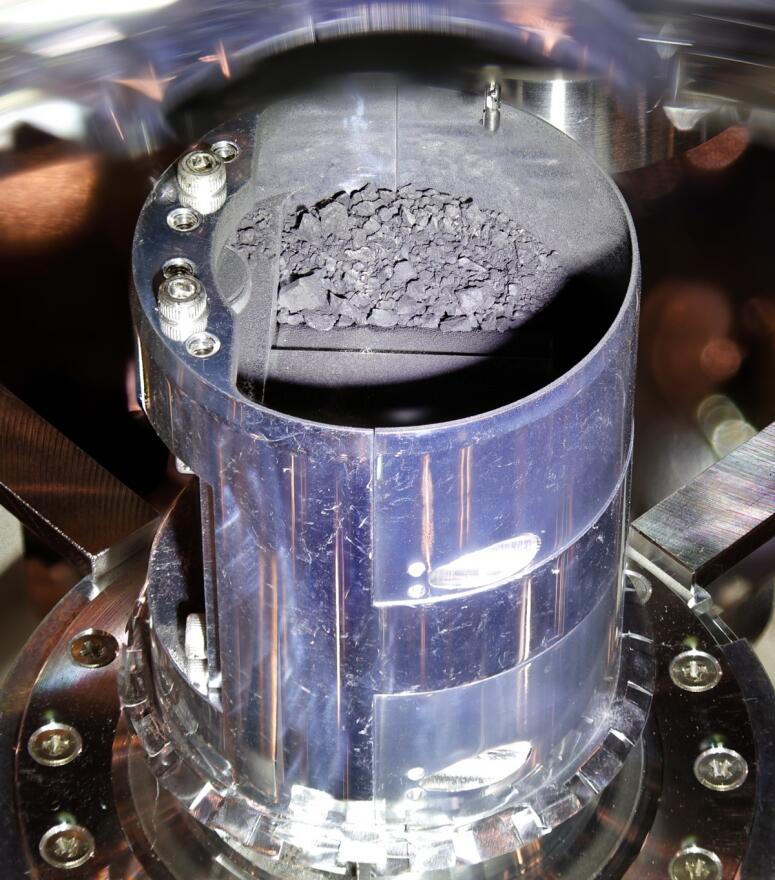
|
Feb. 22, 2022 Updated
Courtesy Visit to the U.S. Ambassador to Japan
|
Dr. YAMAKAWA Hiroshi, President of Japan Aerospace Exploration Agency (JAXA) and Mr. HOSHIDE Akihiko, JAXA Astronaut paid a courtesy visit to H.E. Mr. Rahm Emanuel, Ambassador of the United States of America to Japan. Astronaut Hoshide shared his exciting stories of the SpaceX Crew Dragon (Crew-2) missions aboard the International Space Station. 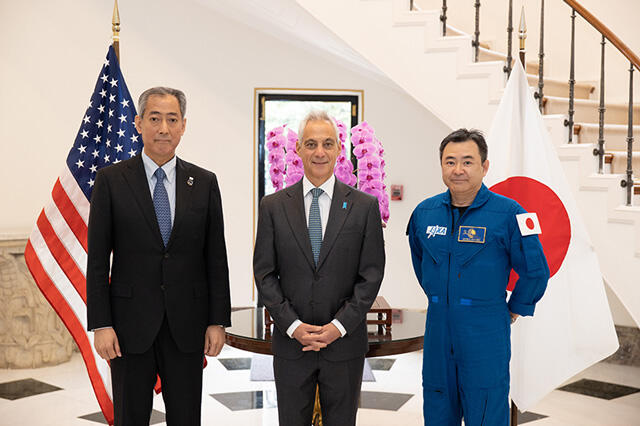
From left to right: Dr. Yamakawa, JAXA President, H.E. Mr. Emanuel, Ambassador of the United States of America to Japan, JAXA Astronaut Hoshide |
Feb. 14, 2022 Updated
Research published in “Science” asks how representative is the sample returned by Hayabusa2 of the entire asteroid?
|
The sample returned by Hayabusa2 from asteroid Ryugu is compared with observations of the asteroid from the Hayabusa2 spacecraft. The results of this analysis have been published in the US scientific journal, “Science” on February 10 (EST). 
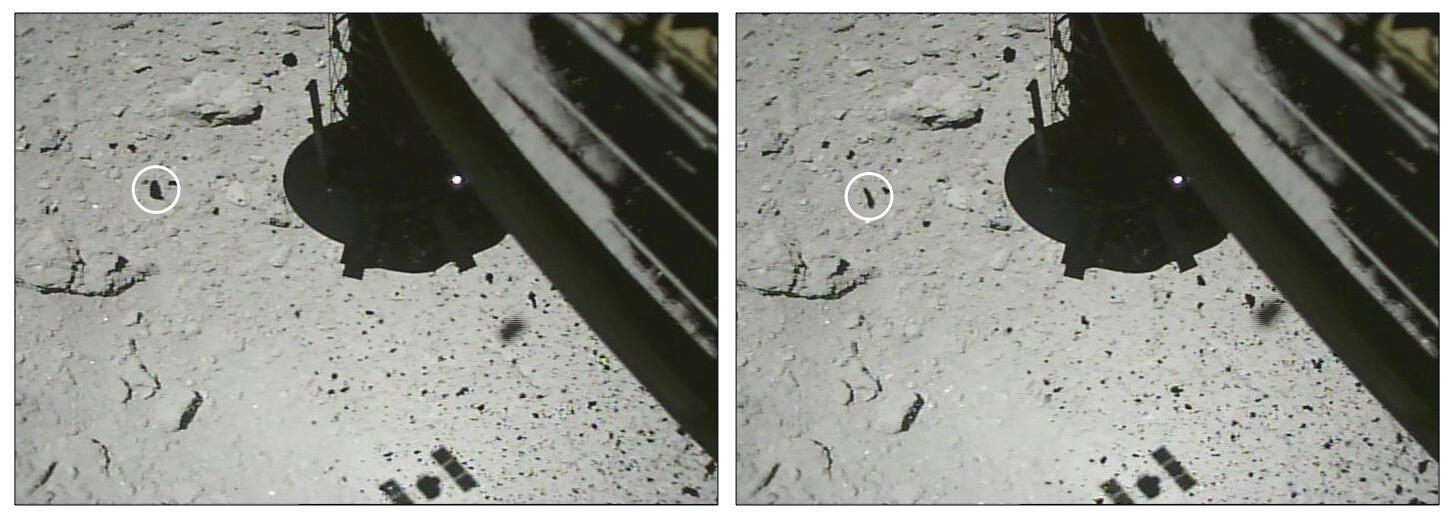
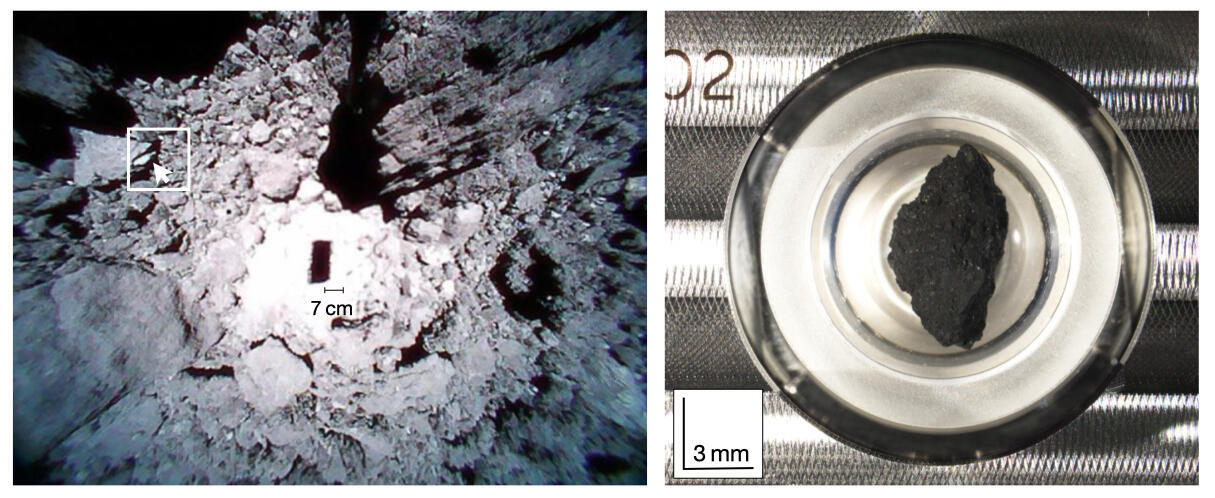
Click here for details: |
January 2022
Jan. 14, 2022 Updated
International Workshop on Vegetation LIDAR / High-Precision 3D Mapping from Space 2022
|
Date:February 22, 2022 Venue:Online(Zoom) 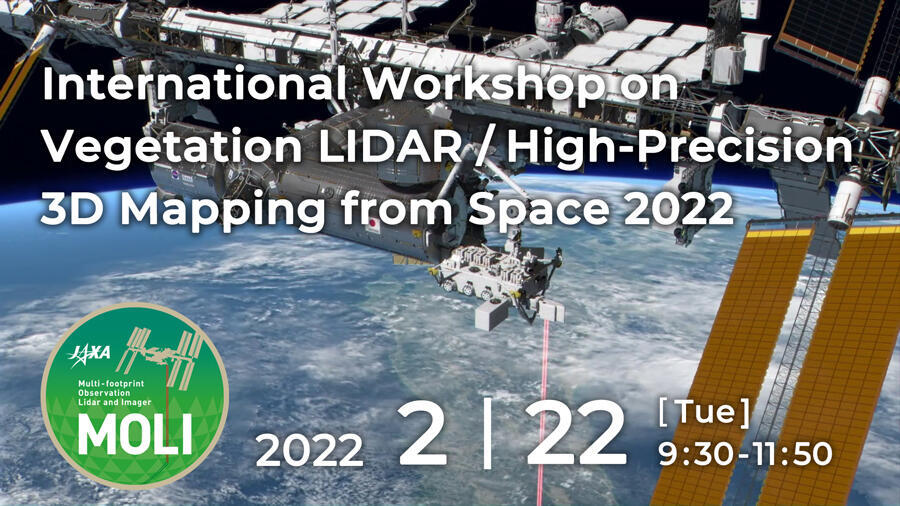
|